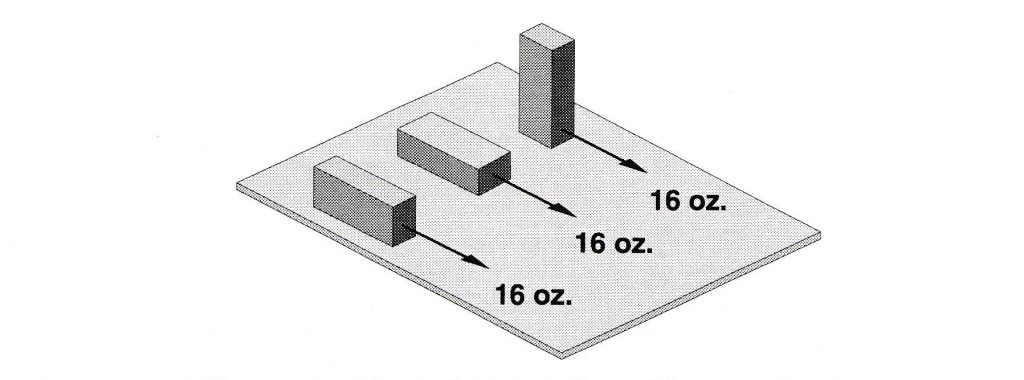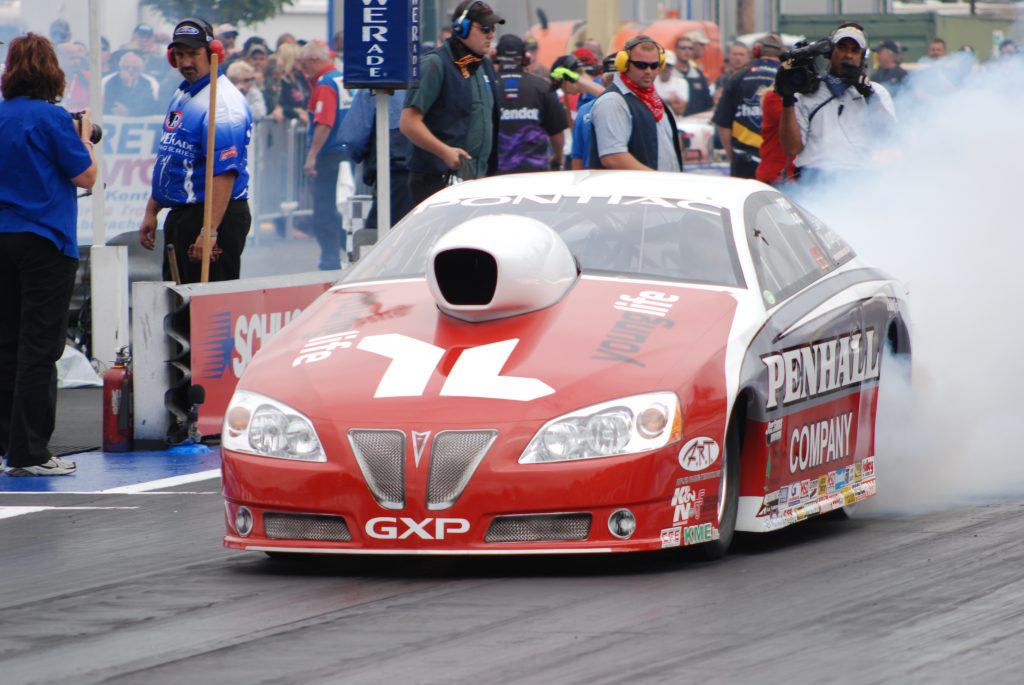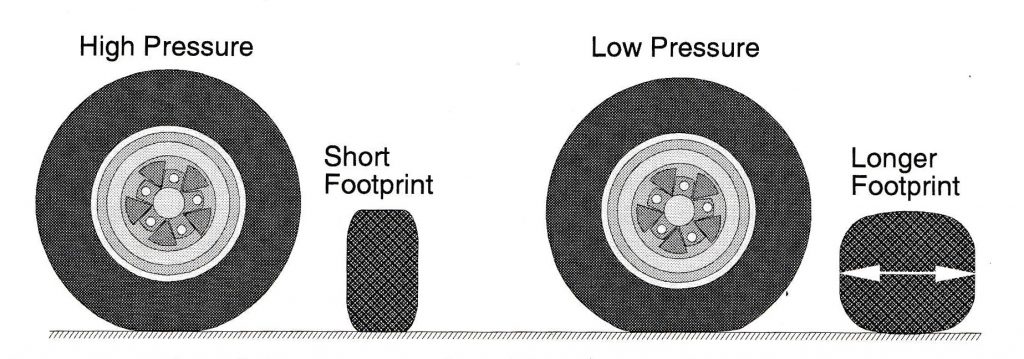In the last issue, we wrote about how to stuff larger tires inside your ride. While that article focused on filling up existing wheel wells with larger rubber, it also brought this question to the table:
How big is too big when it comes to tires?
Decades ago, in a conversation with the late Bill Jenkins, the Grump succinctly stated that many racers “over-gear” their cars and many racers use too much tire. Jenkins went on to say that you should only use as much tire as necessary. Otherwise, you’re carrying excess baggage (the weight of the tire carcass) around for nothing.
So was the Grump right when it comes to tires? Absolutely. Keeping in mind we’re moving from little tires — maybe a P325-50 or P275-60 drag radial to something much larger like a 14X32 slick — we’ll share our reasoning.
One common assumption is that the wider the tire you put on the car, the better the traction. We spoke to pro chassis builder Jerry Bickel about the topic, and we can assure you this is not necessarily the case. Bickel notes that tires grip the pavement by way of “the force of friction”.
“The force of friction is equal to the coefficient of friction times the force perpendicular,” Bickel said. “Different surfaces have different amounts of friction. For example, smooth glass is very slippery while rubber grips very well. The coefficient of friction for metal on metal may be 0.2 but rubber on concrete may be 0.7 or higher.”
Fair enough, but what is perpendicular force? It’s the weight applied straight down to an object. If you increase the perpendicular force, the force of friction will increase proportionately. If the race car is working properly, you’ll transfer a big chunk of weight to the rear tires. For the moment, however, let’s concentrate on a specific weight. The Bickel drawing below shows a 40-ounce brick. The perpendicular force of the brick is 40 ounces, no matter which side of the brick you place against the table.
For the sake of comparison, let’s assume the brick has a 0.4 coefficient of friction when it is “dragged” across the table. Since the brick is constructed of a consistent material, the coefficient of friction is the same, no matter how the brick is rotated and no matter which side is exposed to the table.
When the coefficient of friction is multiplied by the perpendicular force, you come up with the total force of friction: 0.4 X 40 = 16 ounces
As you can see, there’s nothing in the formula that takes surface area into consideration. The reason is if you place the brick on the table with any side down, then the force of friction will still remain the same. Bickel points out that if you pull a brick across a table with an ounce pull scale, no matter what side of the brick you place the table, the pull in ounces will remain the same.
Given the above, it stands to reason that narrow tires should have exactly the same traction as wide tires. That may be true, but much of it depends upon some important characteristics of the rubber compound found in the slick.
The coefficient of friction for rubber varies with the compound. Soft rubber has a low durometer reading and has a high coefficient of friction. Hard rubber has a high durometer reading and most often has a lower coefficient of friction. Because of this, it would seem logical that a very soft tire compound would provide your car with the most grip, but the reality is you may actually lose traction if the tire is too soft. This is because of the inability of softer compounds to resist high shearing forces.
Likely everyone reading this is familiar with the black tracks that are laid down by drag race slicks on the racing surface. Bickel points out that “burning rubber” doesn’t accurately describe what is happening during a run. Unless the tires spin violently, the tire tread will not become hot enough to burn. More often, the rubber tracks that remain on the pavement are a result of the shearing effect of the tire tread against the pavement. That’s why (where legal), cars perform a burnout and carefully reverse in order to line up in the tire tracks.
If the rubber shears off the tread too easily, the tires spin. The car doesn’t hook and of course, it can’t make a clean pass. The truth is, slicks with a hard compound will not shear as easily as soft ones, but they will have lower coefficient of friction. To increase the shear resistance of a soft rubber compound, a large tire to pavement contract area (footprint) is required. There are two ways to increase tire footprint: Lower the tire air pressure or choose a bigger tire.
It’s also no secret that drag slicks are designed to operate with low (4-12 PSI) operating pressure. Lower tire pressures such as this will flatten the contact area, which in turn, increases the size of the tire footprint. The larger footprint resists shearing forces, which in turn allows the car to hook and of course, have a lower 60-foot time.
Tires that are wider or have a larger diameter create a bigger footprint, but many people tend to forget the second part. Taller tires will in fact place more tire area (front to back) on the racing surface.
When you’re choosing slicks, it’s important to balance the tire size with the compound softness. Bickel offers a good rule of thumb to follow when picking tire widths and compounds:
“Bigger tires do not automatically provide better grip — if you change to a larger tire, you must also select a softer compound to assure better traction”.
Bickel also points out that you should never select a bigger tire just because it looks like it will work better. Large tires have more inertia and require more power to accelerate. That’s why Jenkins told us years ago that we should only use as large a tire as necessary in order to get the job done.
When you’re doing your drag slick research, it’s a good idea to double-check the race rules for specific tire size limitations. You might be surprised to see that tire dimensions can be restricted. It’s also a good plan to snoop around and check out what other folks with similar combinations are running (at least those in your class). You should also contact the tire manufacture and get their input into the sizing and compounds recommended for your particular application. Most of the factory reps are really dialed in to what is currently the hot setup and will know exactly what you need.
The tire manufacturers have a wheel rim width recommendation range for each size drag slick. They usually allow for a 2-3-inch tolerance.
“Rim width is related to drag slick inflation pressure,” Bickel said. “The wider the rim, the more tire pressure you can run while maintaining the same footprint area. A higher inflation pressure can help prevent tire shake. Drag slick circumference (rollout) is also affected by rim width. Wider rims relax the tire and result in a smaller rollout measurement. Narrow rims pinch the tire beads together and create a greater rollout measurement.
As you can see, picking a tire isn’t exactly based upon bigger is better. There are tons of variables, and in many cases, a car might actually perform better with a smaller tire.






[…] Join Date: Apr 2016 Location: Bradenton, FL Posts: 648 Another really long article: Drag Slicks and Traction: Why Bigger Isn't Always Better When it Comes to Slicks – OnAllCylinders Summary is that wider is better sometimes, but not always……. My head spinning. So many […]
Well, I would say that 99.999999999768% of all of the people at the drag strip or the street drags by LAX, people run what they can afford. If you can tub your ride, then get the real meat, if not, run the widest tires you can fit with really low pressure, like 7-10lbs.
Articles that feature the buying habits of rich and retired old farts are not very interesting. Anyone would get the best stuff if money is not the objectionable element.
And obviously you dont understand the geometry and fundamentals of a race car. These guys are who you learn from. I have 29×9s on my car and bet it will out 60 ft most cars
I’m not rich or an old retired guy, but maybe you need to read this article again…. he’s only describing all the different forces involved tire sizes/presures/compounds. The bottom line was contact the tire representatives to get your perfect tire for your application (the first time thus saving you time and MONEY).
I have a 62 plymouth fury m t drag dot radial and I don’t hook good at all. I only run 11.2s my 8 yr old goodyears hooked much better 1.5s compared 1.7 but they don’t make those g y radials any more
I have a 3000lb stel car 327+30 331 cuin sbc .447 lift cam hydrolic 350 cam a 220 Muncie 4 speed 514 rar 30tall 9inch wid mandh slicks I think it to much tire to tall abd wide do you have any suggestions I was going to go to a street slick I don’t think you cn get an 8 in slick any more I have a large opening to fill
I WOULD SUGGEST ON TEST AND TUNE TO FULL AROUND WITH THE AIR PRESSURE. ALSO THAT GEAR YOU ARE RUNNING WOULD BE GOOD FOR AN 1/8TH MILE BUT I CAN,T SEE IT ON A 1/4 MILE.
M and H slicks are they still the best?
IF YOU NOTICE MOST OF THE PRO’S AR RUNNING GOOD YEAR EAGLES WHILE SPORTSMANS SEEM TO BE ON HOOSIERS
What do they do with the old slicks
MOST OF OLD TIRES ARE RECYCLED. t least mine were.
Yes. Steve didn’t seem to understand the article. He needs to re read it and think about what was said. I am building a 65 short bed step side C10. Sbc 8.5:1 355 cid twin turbo, air-air cooler, efi ,2 step, 20#s boost, 3500 stall, and a th400. Now that I’ve come into a few good dollars, I am about to put in a back half, ladder bar or 4 link, fiberglass hood, cage, ect. I am (or I was) wanting a big tire 15×33 for the truck but after reading this, I’m not so sure. I do know I need to figure out what gear I need to run yet tho. I was told a shallow gear for turbos 3.08 or so but not too confident on that one.
How did the combo work out for you? What gear did you
End up going with? Just curious I just ran across this story and read the comments
I have a 1999 firebird about 450-475HPwith a150shot of nitrous w/4.10 gears and 6speed Trem. Trans. Would like to run the 1/4 afew times i have aset of 275x45x16” Drag radials. Anyone has any suggestions on these tires. They are B. F. Goodrich i got them at a good price new. Thanks Tom